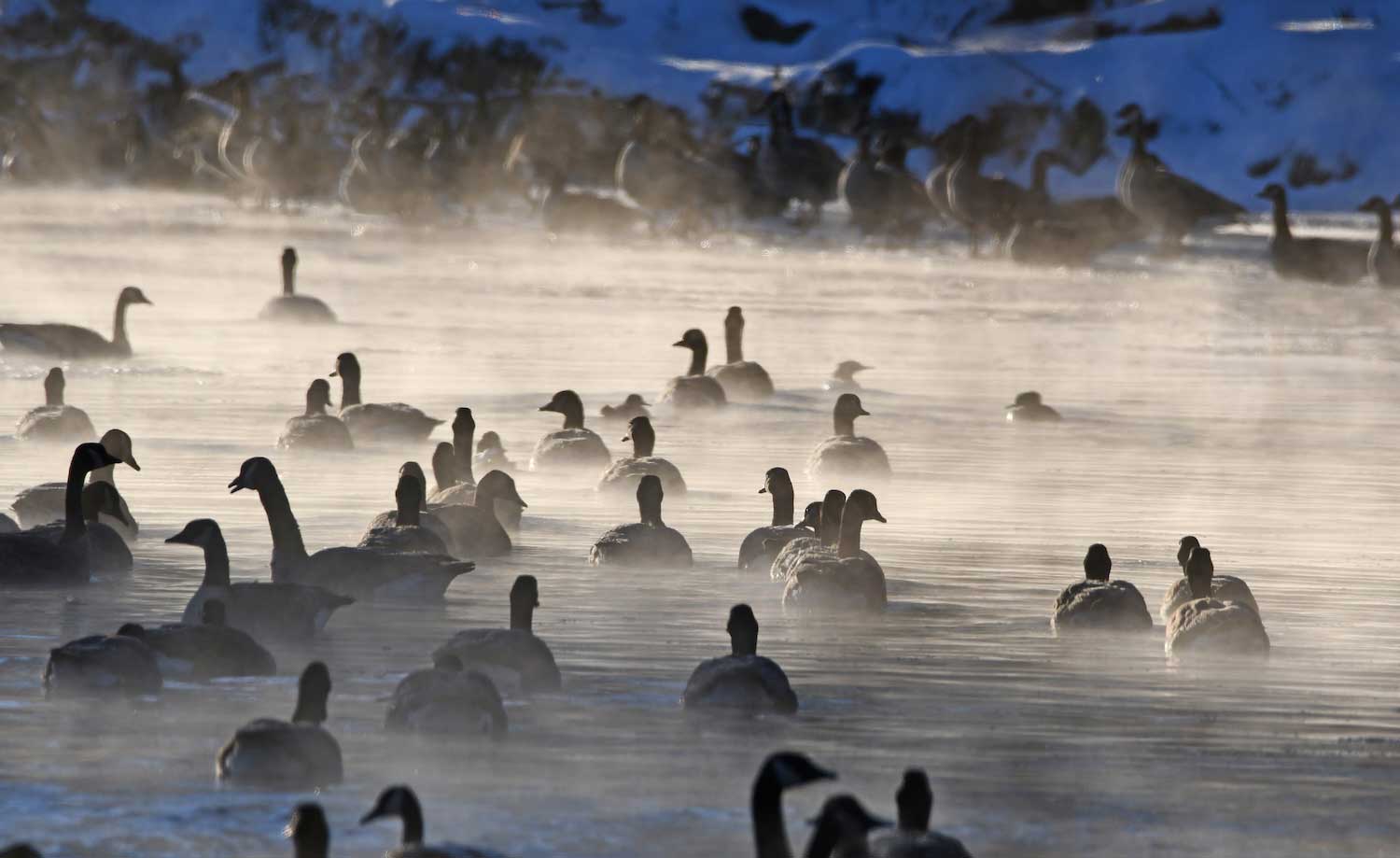Nature curiosity: What is the polar vortex?

Certain things about winter are just par for the course. We need to make sure we have our hats, gloves and boots at the ready. Our snow shovels and window scrapers will likely be pressed into duty at least a few times throughout the season. And some days will probably be so cold that it would be easier — and safer — to just stay indoors.
When the latter happens, the polar vortex often takes the blame. But what is the polar vortex, and why does it seem to be punishing us every so often?
Put simply, the polar vortex is a large area of low pressure and cold air that can be found at both the North Pole and the South Pole, according to the National Weather Service. That means there are actually two polar vortexes, or vortices, one at each pole. The one we hear about here in Illinois is the Arctic polar vortex, which is found at the North Pole.
The air in the polar vortex sits between 10 miles and 30 miles above Earth's surface, with the air held aloft moving counterclockwise. Most of the time, that cold air stays up above the North Pole, but from time to time, conditions allow the arctic air to get pushed south. This happens because of the polar jet stream, a band of strong wind in the upper atmosphere, according to the National Oceanic Atmospheric Administration.
The polar jet stream is high up in the atmosphere, but not as high as the polar vortex. The winds in the jet stream are about 5 miles to 9 miles above Earth's surface, compared to 10 miles to 30 miles for the polar vortex, the NOAA reports. Normally, the polar vortex remains stable, keeping the air in place, but when the polar vortex is unstable, the jet stream isn't strong enough to keep the polar vortex in place. This is when we start hearing about the polar vortex here in the United States.
When the polar jet stream is weakened by instability in the polar vortex, that cold, Arctic air that normally remains above the North Pole pushes southward, sometimes as far south as northern Illinois and even points beyond. During these periods, areas affected by the polar vortex experience much colder temperatures than normal for the time of year. The United States is not the only part of the world that occasionally experiences the unusually cold air associated with the polar vortex. It can also affect parts of Europe and Asia, the National Weather Service reports.
It might seem like the polar vortex is a recent phenomenon because it has been popping up on the news and on social media pretty regularly for the past several years, but in reality it's nothing new. Even the term "polar vortex" is nothing new. Its first known use was in 1853, according to the National Oceanic Atmospheric Administration. The term has grown in popularity of late, however, bringing new attention to a weather phenomenon that's been happening for a long time.
When frigid temperatures are forecast, preparation is key. In the Chicago area, the National Weather Service issues a wind child advisory when predicted wind chill values are -25 degrees or colder. A wind chill warning is issued when predicted wind chill values are -30 degrees or colder.
The wind chill is a temperature index that takes air temperature and wind speed into consideration to describe what the temperature feels like. This is why it is also sometimes called the feels-like or real-feel temperature. When the air temperature is 10 degrees with a wind speed of 5 mph, the wind chill is 1 degree. When the air temperature is 10 degrees with a wind speed of 20 mph, the wind chill is -9 degrees. When the air temperature is 0 degrees with wind speeds of 20 mph, the wind chill is -22.
People can develop hypothermia and frostbite when exposed to cold temperatures for extended periods without proper cold-weather gear. Both require emergency medical treatment. Signs of hypothermia in adults and children include confusion, shivering, exhaustion, drowsiness, fumbling hands, slurred speech and memory loss, according to the Illinois Department of Public Health. In infants, signs can include lethargy, listlessness, slow breathing and cold skin.
Frostbite most commonly affects the hands, feet and exposed areas of the face and head. Skin that is frostbitten is typically stiff and whitish, and the area is numb instead of painful, IDPH reports.
